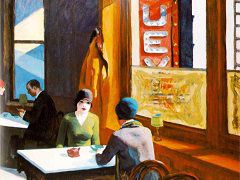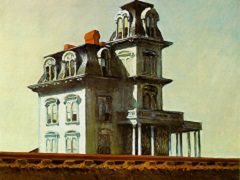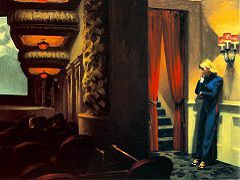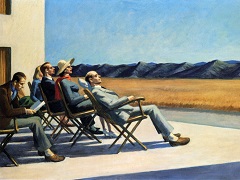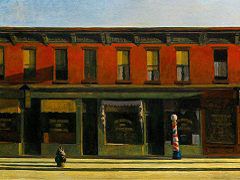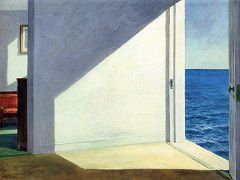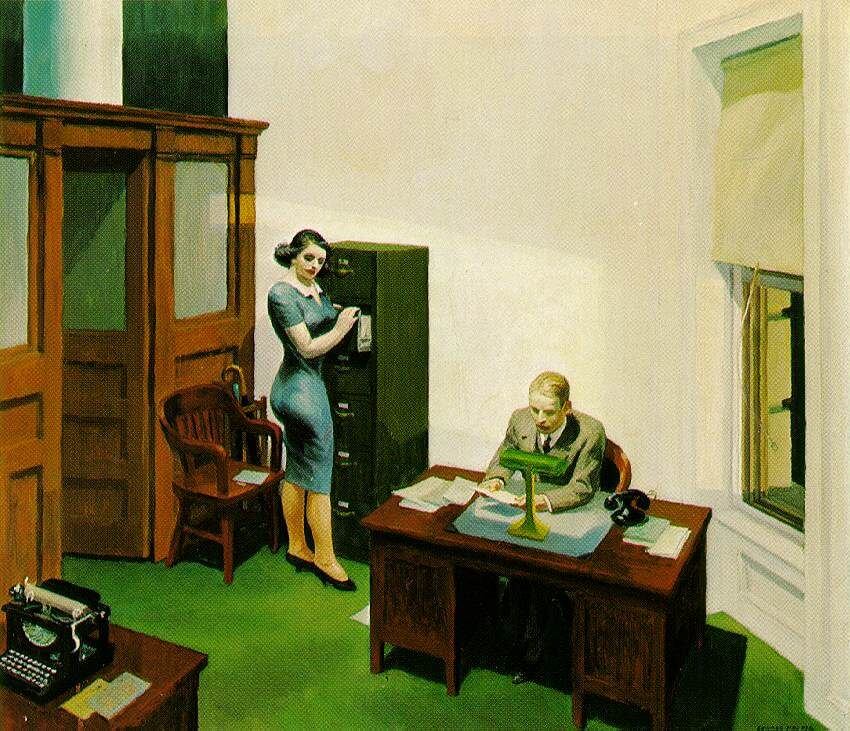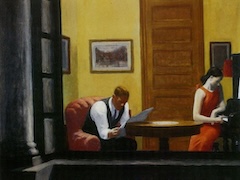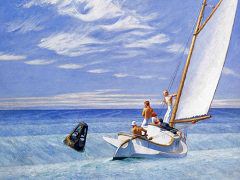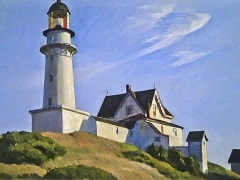Queensborough Bridge, 1913 by Edward Hopper
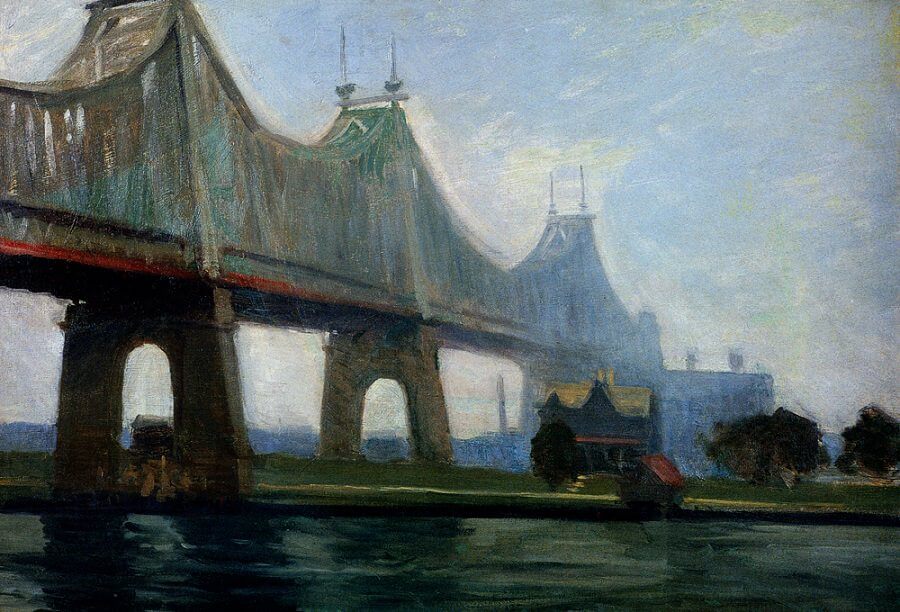
Queensborough Bridge, has nothing heroic about it despite its gigantic scale. Unlike many artists of the day, Hopper was never tempted to sing the praises of modern engineering. Even the ironic Marcel Duchamp, two years after arriving in New York in 1915, declared that "The only works of art America has produced are its sanitary installations and its bridges."
This belief in progress, shared by many of Hopper's contemporaries and not foreign even to the Precisionists of the 1920s, ran counter to his skeptical nature. Queensborough Bridge shows no sign of an enthusiasm for technology. The bridge extending diagonally into the background provides Hopper with an opportunity to depict atmospheric phenomena, to let near objects merge gradually with more distant ones - just as Claude Monet did with such virtuosity in his series of Waterloo Bridge paintings around the turn of the century. And as if offhandedly, Hopper confronts the soaring steel structure with a tiny boat house and a gabled wooden residence, relics of a passing era which the bridge might overtop, but cannot overcome. From the evidence of the picture, it is difficult to infer whether Hopper's sympathy lay more with the old or with the new. Like Monet, Hopper organically integrates technology into the natural realm. Later he would view this relationship between nature and the work of human hands in a different light.



